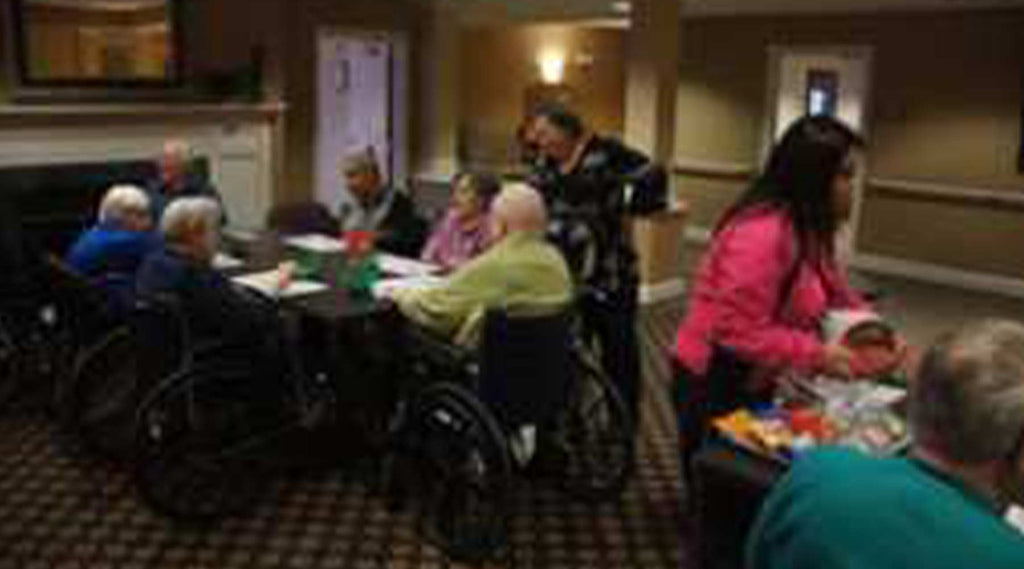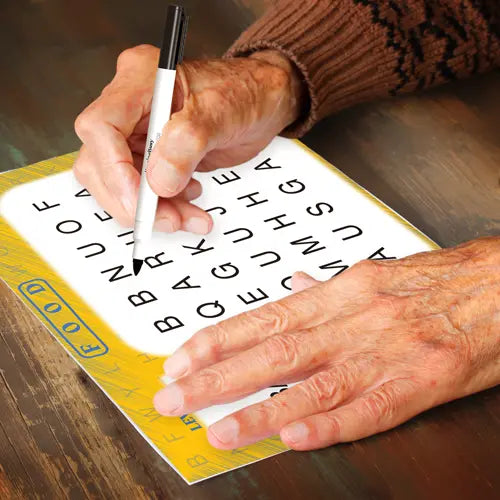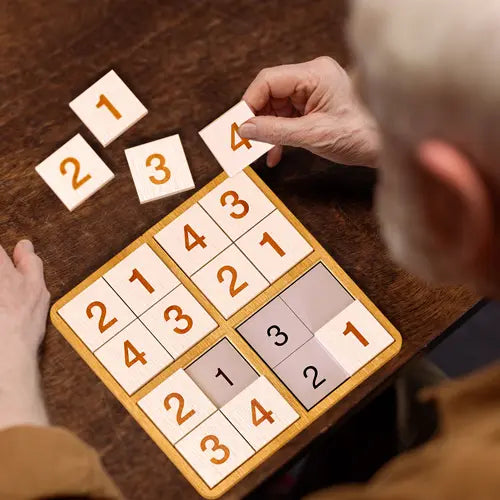
Group activities for people with Alzheimer's and dementia play a major role in most facilities. What activity calendar would be complete without bingo, Wii bowling, bake groups, bean bag toss, and other traditional activities. They offer the opportunity to engage a number of clients at the same time, and provide them with social interaction. They are well liked by the de mentia clients. By applying the Montessori principles, they can be made even better.
Here are some of the things to think about when presenting a group activity to people with dementia:
Every participant should be actively engaged in the activity in some way at all times. The participants should have something to do even when it is not their "turn". They should not have to just sit and wait. Sometimes the traditional approach to the activity has to be adjusted to allow this.
MONTESSORI GROUP ACTIVITIES FOR PATIENTS
- Every participant should be engaged at all times
- The activity should be error free - no winners or losers
- The participants should be interested in the activity
- Match each participants role in the activity to their abilities
- Let the participants participate, don't do it for them
The dementia cognitive activities should be "error free". In Montessori dementia care terms, this means that the participants cannot fail at the activity. It doesn't mean that every participant does as well at the activity as the others, it means that no matter what they do, it is acceptable. This ensures that all participants have a feeling of success and makes it less likely that they will want to avoid the activity because they aren't good at it. For example, an activity that requires a participant to hit a particular target is not error free. If the participant misses, it can be perceived as a failure and that's not error free.
Remember that not everyone is interested in all dementia specific activities. Even in a group setting, it is important to consider the interests of the individuals. The activity may be a great one, well thought out and well presented, but if it's not something the participants are interested in it may not be successful.
Ensure that the ability of the participants is suitable for the activity. If there is a wide variation in the abilities then the clients at the lower levels will be frustrated because they are rushed and the clients at the higher level will be frustrated by the slow pace. Instead of emphasizing the difference in abilities, turn the situation around by finding some way to have the higher level clients work together with those with less ability. For example, maybe they can team up with the higher level person doing the more complicated part while the person with less ability does the part that they are capable of doing, together completing the activity. This avoids the frustration and everyone is successful.
Allow each participant to do the activity for themselves, don't do it for them. If a participant doesn't have the skills or abilities to complete the task, offer them a modified version (or a different role) that is within their ability. Don't put them in the position where someone has to jump in and do it for them. This emphasizes their lack of ability and undermines their confidence.
Group activities for people with dementia are a great opportunity to assign a role to someone who may not have the skills and abilities to participate but can still benefit from the group. For example, a client may be able to call the bingo numbers even if they are not able to play the game. Someone may be able to help with the supplies in an activity (pass them out, pick them up for example).
To put all this into practice, here's an example of applying these Montessori ideas to a traditional activity for dementia residents, the bean bag toss. In the normal presentation of the activity, one participant at time tosses the bag, attempting to hit a numbered hole. The higher the number, the better. The other participants are not actively engaged. Score is kept with the winner being the participant with the highest score at the end of the game. The person who enjoys this game the most is generally the person who is best at it.
A Montessori presentation would use the same equipment but the goals would be different. Start the activity by presenting a list of about fifteen actions that the participants are all capable of doing. Things such as clap your hands, shake hands with the person to your left, get a candy. Have each participant select an action and then assign that action to one of the numbers on the bean bag target (or randomly draw the actions). Do this for all of the target numbers. Give a different number to the area outside the target and assign it an action as well.
To play the game, each participant throws the bag at the target and everyone does the action assigned to the number hit. If the target is missed completely, the action assigned to that number is done by everyone. This keeps all participants involved whether it is their turn or not. Participants will cheer for the numbers corresponding to their favorite actions and maybe joke about not hitting their least favorite. No scoring, no losers and everyone is involved and having fun. Doesn't that sound better?
The "The Benefits of Small Group Activities for Dementia Patients" article provides more information about small group activities.



